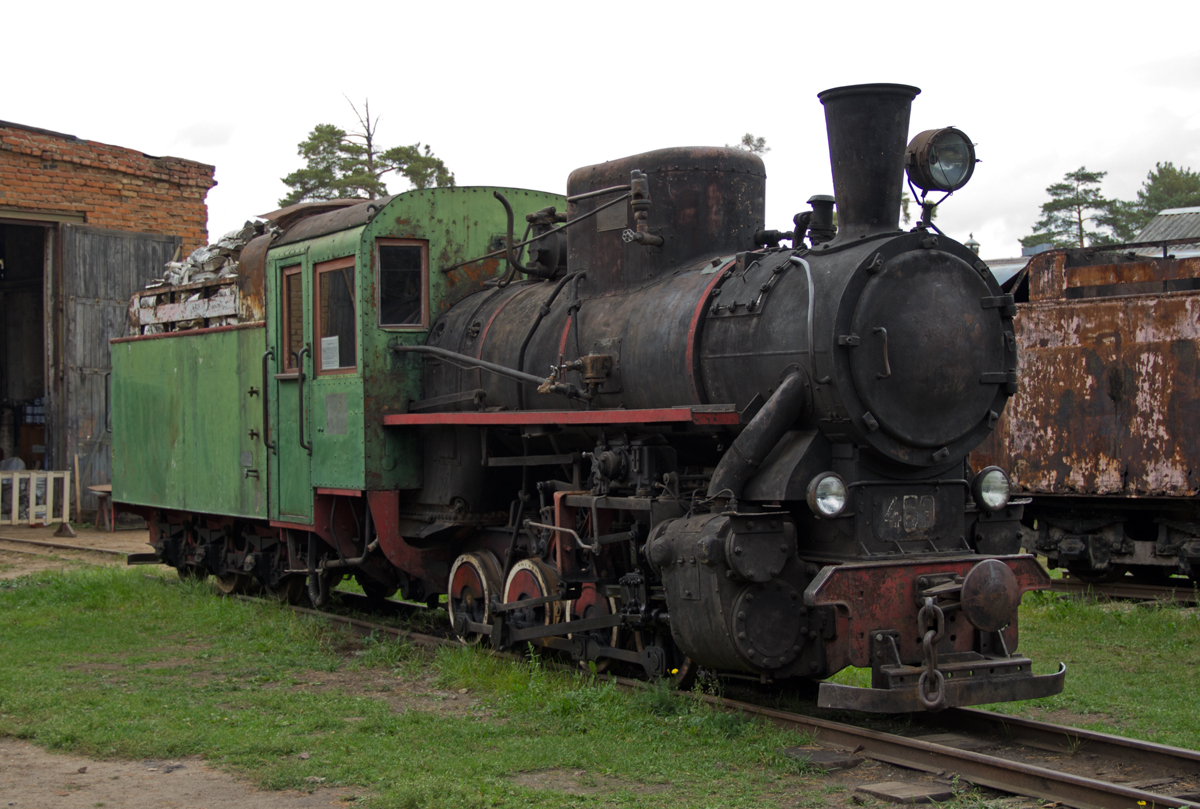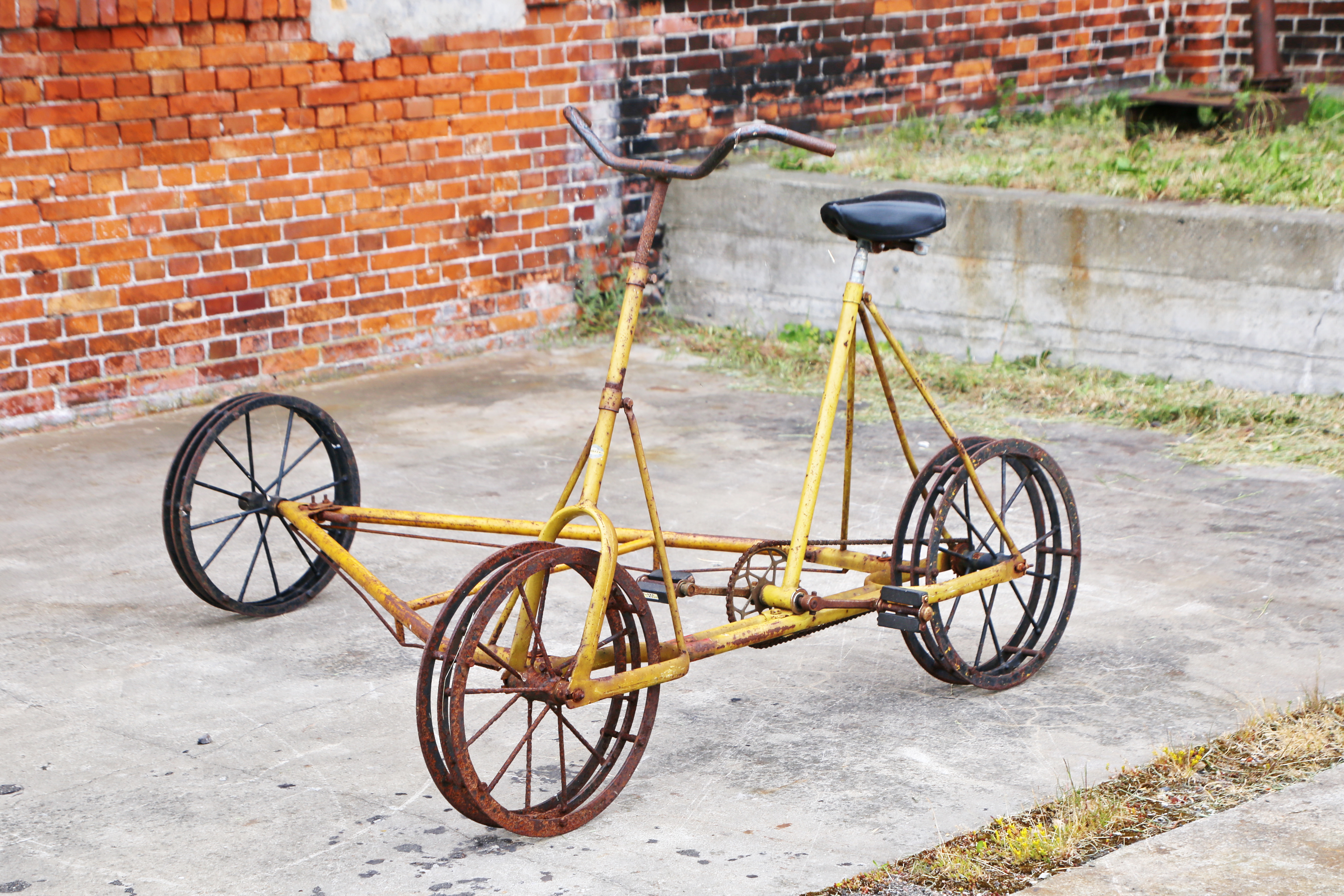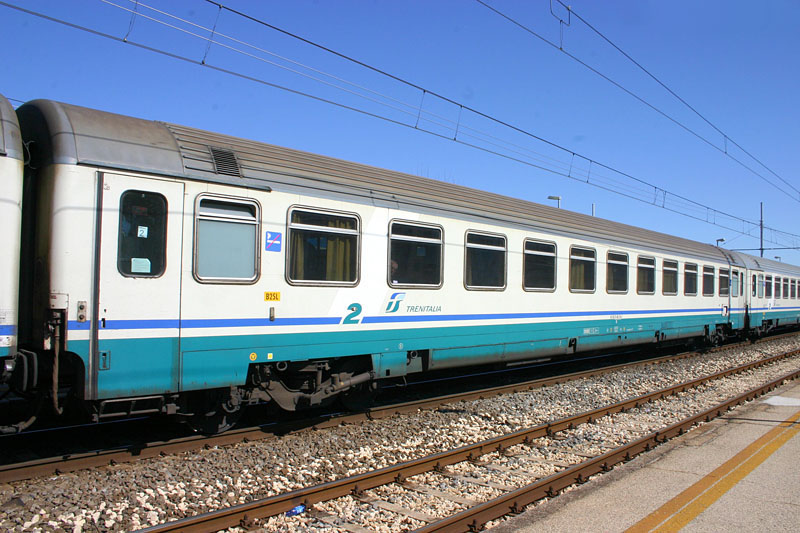|
Kudemskaya Narrow-gauge Railway
The Kudemskaya narrow-gauge railway is located in Arkhangelsk Oblast, Russia. The narrow-gauge railway, a former forest railway, was opened in 1949 and has a total length of , of which is currently operational. The track gauge is . The head office of the railway is located in the Arkhangelsk Oblast, Severodvinsk. Status The total length of the Kudemskoy narrow-gauge railway at the peak of its development exceeded . The main station is located in the village of Beloye Ozero; the Vodogon station is located on the western outskirts of the city of Severodvinsk. Passenger trains between Vodogon and Beloye Ozero are scheduled five times a week. The railway also transports food, mail and fuel. In 2010, this railway appeared in the Forbes ranking of the 10 most beautiful railway routes in the world. In 2013, a new passenger car was purchased for the route. Rolling stock Locomotives * TU8 – № 0284, 0332 * TD-5U «Pioneer» – Transportation local residents Railroad car * ... [...More Info...] [...Related Items...] OR: [Wikipedia] [Google] [Baidu] |
Narrow-gauge Railway
A narrow-gauge railway (narrow-gauge railroad in the US) is a railway with a track gauge narrower than standard . Most narrow-gauge railways are between and . Since narrow-gauge railways are usually built with tighter curves, smaller structure gauges, and lighter rails, they can be less costly to build, equip, and operate than standard- or broad-gauge railways (particularly in mountainous or difficult terrain). Lower-cost narrow-gauge railways are often used in mountainous terrain, where engineering savings can be substantial. Lower-cost narrow-gauge railways are often built to serve industries as well as sparsely populated communities where the traffic potential would not justify the cost of a standard- or broad-gauge line. Narrow-gauge railways have specialised use in mines and other environments where a small structure gauge necessitates a small loading gauge. In some countries, narrow gauge is the standard; Japan, Indonesia, Taiwan, New Zealand, South Africa, and the A ... [...More Info...] [...Related Items...] OR: [Wikipedia] [Google] [Baidu] |
TU8 Diesel Locomotive
TU8 () – Soviet, later Russian diesel locomotive for gauge . History Diesel locomotive TU8 () is used for transportation & shunting services on narrow-gauge railways with a track gauge ranging from to . The TU8 was developed in 1987 – 1988 at the Kambarka Engineering Works to replace the ageing locomotive classes TU6A (). The cab is equipped with efficient heat-system, refrigerator, radio-set and air conditioning. Series locomotives The diesel locomotive TU8 (ТУ8) has been used as the basis of three other locomotives: * TU8G (ТУ8Г) * TU8P (ТУ8П) * TU6SPA (ТУ6СПА) mobile power station Additional specifications *Distance between bogies – 4,000 mm *Base of bogies – 1,400 mm Gallery File:Kud-134310.jpg, TU8, Udimskaya narrow-gauge railway File:Узкоколейный тепловоз ТУ8-0427 с туристическим поездом на станции Гуамка..JPG, TU8-0427, Apsheronsk narrow-gauge railway File:Sharya TU8-0167 w ... [...More Info...] [...Related Items...] OR: [Wikipedia] [Google] [Baidu] |
Railway Lines Opened In 1949
Rail transport (also known as train transport) is a means of transport that transfers passengers and goods on wheeled vehicles running on rails, which are incorporated in tracks. In contrast to road transport, where the vehicles run on a prepared flat surface, rail vehicles (rolling stock) are directionally guided by the tracks on which they run. Tracks usually consist of steel rails, installed on sleepers (ties) set in ballast, on which the rolling stock, usually fitted with metal wheels, moves. Other variations are also possible, such as "slab track", in which the rails are fastened to a concrete foundation resting on a prepared subsurface. Rolling stock in a rail transport system generally encounters lower frictional resistance than rubber-tyred road vehicles, so passenger and freight cars (carriages and wagons) can be coupled into longer trains. The operation is carried out by a railway company, providing transport between train stations or freight customer facili ... [...More Info...] [...Related Items...] OR: [Wikipedia] [Google] [Baidu] |
750 Mm Gauge Railways In Russia (the 75, or, French 75)
{{Numberdis ...
75 may refer to: * 75 (number) * one of the years 75 BC, AD 75, 1875 CE, 1975 CE, 2075 CE * ''75'' (album), an album by Joe Zawinul * M75 (other), including "Model 75" * Highway 75, see List of highways numbered 75 *Alfa Romeo 75, a car produced by Alfa Romeo See also * * * * 1975 (other) * 1875 (other) * Canon de 75 modèle 1897 The French 75 mm field gun was a quick-firing field artillery piece adopted in March 1898. Its official French designation was: Matériel de 75mm Mle 1897. It was commonly known as the French 75, simply the 75 and Soixante-Quinze (Frenc ... [...More Info...] [...Related Items...] OR: [Wikipedia] [Google] [Baidu] |
Narrow-gauge Railways In Russia
The Imperial Russian narrow railway track gauge was , the current track gauge is predominantly . In Soviet Russia, narrow-gauge railways were mostly common in forestry and peat industries in low inhabited places. Usually they have one main line and number of temporary branches. There was commonly a passenger service to villages and towns for workers. As of the mid 2010s, a number of industrial railways survive in places with bad roads, but every year some railways are closing. A government railway operator, RZD, closed all owned common 750 mm railways, but still have a number of children's railways with standard rolling stock. The most well-known narrow-gauge railways are Alapayevsk narrow-gauge railway (municipal passenger), Apsheronsk narrow-gauge railway (mountain industrial railway with passenger service), and Karinskaya narrow-gauge railway (suburban passenger private railway). Also children's railways are located in many big cities. Overview 1067mm * Sakh ... [...More Info...] [...Related Items...] OR: [Wikipedia] [Google] [Baidu] |
Passenger Car (rail)
A passenger railroad car or passenger car ( United States), also called a passenger carriage, passenger coach ( United Kingdom and International Union of Railways), or passenger bogie ( India) is a railroad car that is designed to carry passengers. The term ''passenger car'' can also be associated with a sleeping car, a baggage car, a dining car, railway post office and prisoner transport cars. The first passenger cars were built in the early 1800s with the advent of the first railroads, and were small and little more than converted freight cars. Early passenger cars were constructed from wood; in the 1900s construction shifted to steel and later aluminum for improved strength. Passenger cars have increased greatly in size from their earliest versions, with modern bi-level passenger cars capable of carrying over 100 passengers. Amenities for passengers have also improved over time, with developments such as lighting, heating, and air conditioning added for improved passen ... [...More Info...] [...Related Items...] OR: [Wikipedia] [Google] [Baidu] |
Snowplow
A snowplow (also snow plow, snowplough or snow plough) is a device intended for mounting on a vehicle, used for removing snow and ice from outdoor surfaces, typically those serving transportation purposes. Although this term is often used to refer to vehicles mounting such devices, more accurately they are known as winter service vehicles, especially in areas that regularly receive large amounts of snow every year, or in specific environments such as airfields. In other cases, pickup trucks and front end loaders are outfitted with attachments to fulfill this purpose. Some regions that do not frequently see snow may use graders to remove compacted snow and ice off the streets. Snowplows can also be mounted on rail cars or locomotives to clear railway tracks. Usage A snowplow works by using a blade to push snow to the side to clear it from a surface. Modern plows may include technology to make it easier to perform the work and stay on the road. These include Global Positionin ... [...More Info...] [...Related Items...] OR: [Wikipedia] [Google] [Baidu] |
Tank Car
A tank car ( International Union of Railways (UIC): tank wagon) is a type of railroad car (UIC: railway car) or rolling stock designed to transport liquid and gaseous commodities. History Timeline The following major events occurred in the years noted: *1865: Flatcars with banded wooden planks or decking mounted on top are employed for the first time to transport crude oil from the fields of Pennsylvania during the Pennsylvanian oil rush. Laurence Myers of Philadelphia invented the ''Rotary Oil Car'', as he named it. It was an improvement on a patent from 1851 of a freight car for transporting coal. The new invention patented on July 18, 1865, was for the transportation of crude oil and petroleum. It was the first appearance of an oil tank on a railroad flatcar. Three books mention his invention. *1869: Wrought iron tanks, with an approximate capacity of per car, replace wooden tanks. *1888: Tank-car manufacturers sell units directly to the oil companies, with capa ... [...More Info...] [...Related Items...] OR: [Wikipedia] [Google] [Baidu] |
Flatcar
A flatcar (US) (also flat car, or flatbed) is a piece of rolling stock that consists of an open, flat deck mounted on a pair of trucks (US) or bogies (UK), one at each end containing four or six wheels. Occasionally, flat cars designed to carry extra heavy or extra large loads are mounted on a pair (or rarely, more) of bogies under each end. The deck of the car can be wood or steel, and the sides of the deck can include pockets for stakes or tie-down points to secure loads. Flatcars designed for carrying machinery have sliding chain assemblies recessed in the deck. Flatcars are used for loads that are too large or cumbersome to load in enclosed cars such as boxcars. They are also often used to transport intermodal containers (shipping containers) or trailers as part of intermodal freight transport shipping. Specialized types Aircraft parts flatcars Aircraft parts were hauled via conventional freight cars beginning in World War II. However, given the ever-increasing size ... [...More Info...] [...Related Items...] OR: [Wikipedia] [Google] [Baidu] |
Boxcar
A boxcar is the North American ( AAR) term for a railroad car that is enclosed and generally used to carry freight. The boxcar, while not the simplest freight car design, is considered one of the most versatile since it can carry most loads. Boxcars have side sliding doors of varying size and operation, and some include end doors and adjustable bulkheads to load very large items. Similar covered freight cars outside North America are covered goods wagons and, depending on the region, are called ''goods van'' ( UK and Australia), ''covered wagon'' ( UIC and UK) or simply ''van'' (UIC, UK and Australia). Use Boxcars can carry most kinds of freight. Originally they were hand-loaded, but in more recent years mechanical assistance such as forklifts have been used to load and empty them faster. Their generalized design is still slower to load and unload than specialized designs of car, and this partially explains the decline in boxcar numbers since World War II. The ... [...More Info...] [...Related Items...] OR: [Wikipedia] [Google] [Baidu] |
Draisine
A draisine () is a light auxiliary rail vehicle, driven by service personnel, equipped to transport crew and material necessary for the maintenance of railway infrastructure. The eponymous term is derived from the German inventor Baron Karl Drais, who invented his '' Laufmaschine'' (German for "running machine") in 1817, which was called ''Draisine'' in German (''vélocipède'' or ''draisienne'' in French) by the press. It is the first reliable claim for a practically used precursor to the bicycle, basically the first commercially successful two-wheeled, steerable, human-propelled machine, nicknamed hobby-horse or dandy horse. Later, the name draisine came to be applied only to the invention used on rails and was extended to similar vehicles, even when not human-powered. Because of their low weight and small size, they can be put on and taken off the rails at any place, allowing trains to pass. In the United States, motor-powered draisines are known as speeders while hu ... [...More Info...] [...Related Items...] OR: [Wikipedia] [Google] [Baidu] |
Passenger Car (rail)
A passenger railroad car or passenger car ( United States), also called a passenger carriage, passenger coach ( United Kingdom and International Union of Railways), or passenger bogie ( India) is a railroad car that is designed to carry passengers. The term ''passenger car'' can also be associated with a sleeping car, a baggage car, a dining car, railway post office and prisoner transport cars. The first passenger cars were built in the early 1800s with the advent of the first railroads, and were small and little more than converted freight cars. Early passenger cars were constructed from wood; in the 1900s construction shifted to steel and later aluminum for improved strength. Passenger cars have increased greatly in size from their earliest versions, with modern bi-level passenger cars capable of carrying over 100 passengers. Amenities for passengers have also improved over time, with developments such as lighting, heating, and air conditioning added for improved passen ... [...More Info...] [...Related Items...] OR: [Wikipedia] [Google] [Baidu] |



.jpg)

